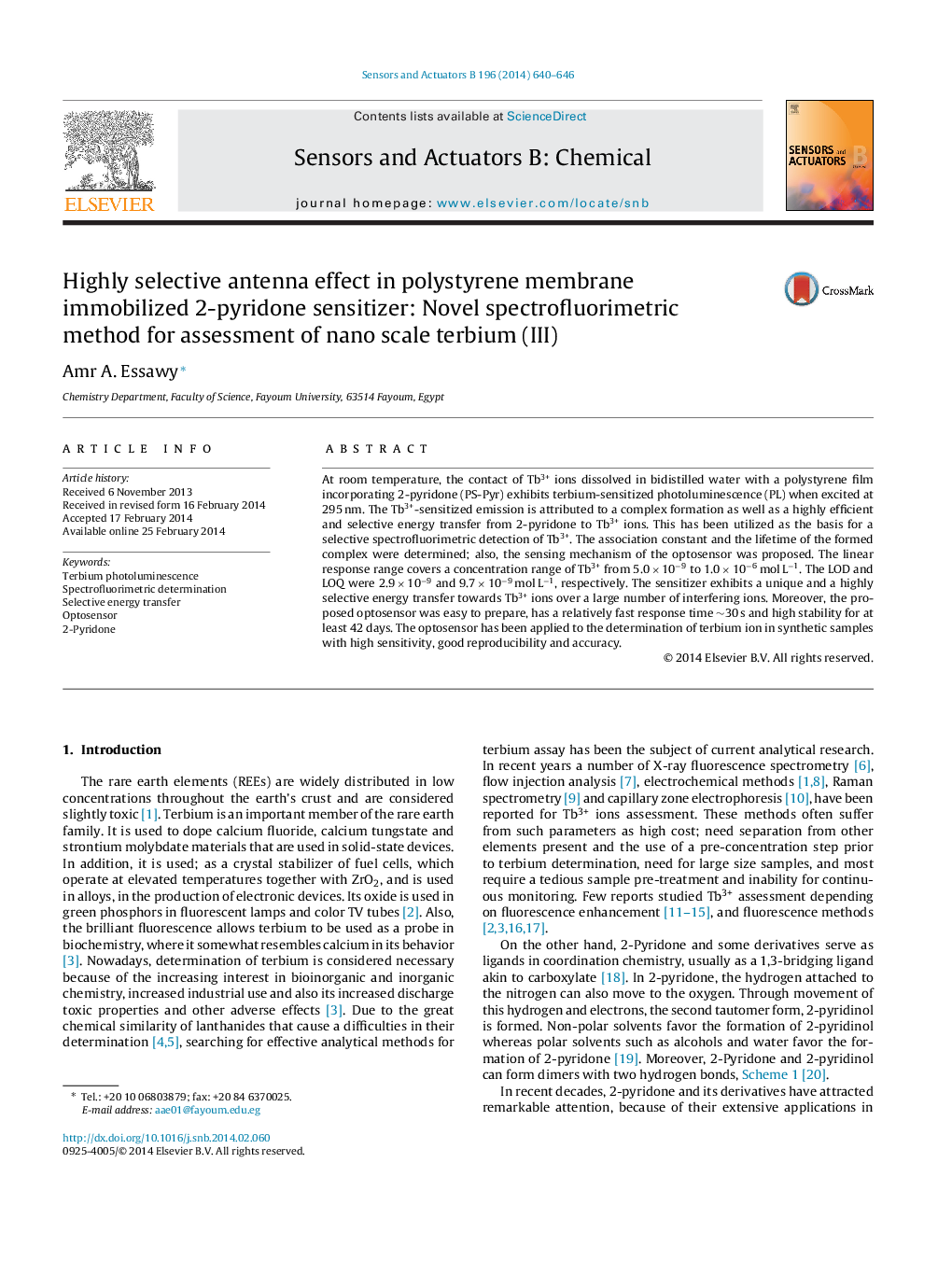| Article ID | Journal | Published Year | Pages | File Type |
|---|---|---|---|---|
| 750952 | Sensors and Actuators B: Chemical | 2014 | 7 Pages |
•Antenna-sensitized PL has been applied for selective detection of Tb3+ rather than other Lns.•The proposed sensor is a polystyrene film immobilized the antenna ligand “2-pyridone”.•The method successfully validates the concept “from antenna to assay”.•The method is facile, highly selective, sensitive, stable, reproducible, fast and validated.
At room temperature, the contact of Tb3+ ions dissolved in bidistilled water with a polystyrene film incorporating 2-pyridone (PS-Pyr) exhibits terbium-sensitized photoluminescence (PL) when excited at 295 nm. The Tb3+-sensitized emission is attributed to a complex formation as well as a highly efficient and selective energy transfer from 2-pyridone to Tb3+ ions. This has been utilized as the basis for a selective spectrofluorimetric detection of Tb3+. The association constant and the lifetime of the formed complex were determined; also, the sensing mechanism of the optosensor was proposed. The linear response range covers a concentration range of Tb3+ from 5.0 × 10−9 to 1.0 × 10−6 mol L−1. The LOD and LOQ were 2.9 × 10−9 and 9.7 × 10−9 mol L−1, respectively. The sensitizer exhibits a unique and a highly selective energy transfer towards Tb3+ ions over a large number of interfering ions. Moreover, the proposed optosensor was easy to prepare, has a relatively fast response time ∼30 s and high stability for at least 42 days. The optosensor has been applied to the determination of terbium ion in synthetic samples with high sensitivity, good reproducibility and accuracy.
Graphical abstractFigure optionsDownload full-size imageDownload as PowerPoint slide
